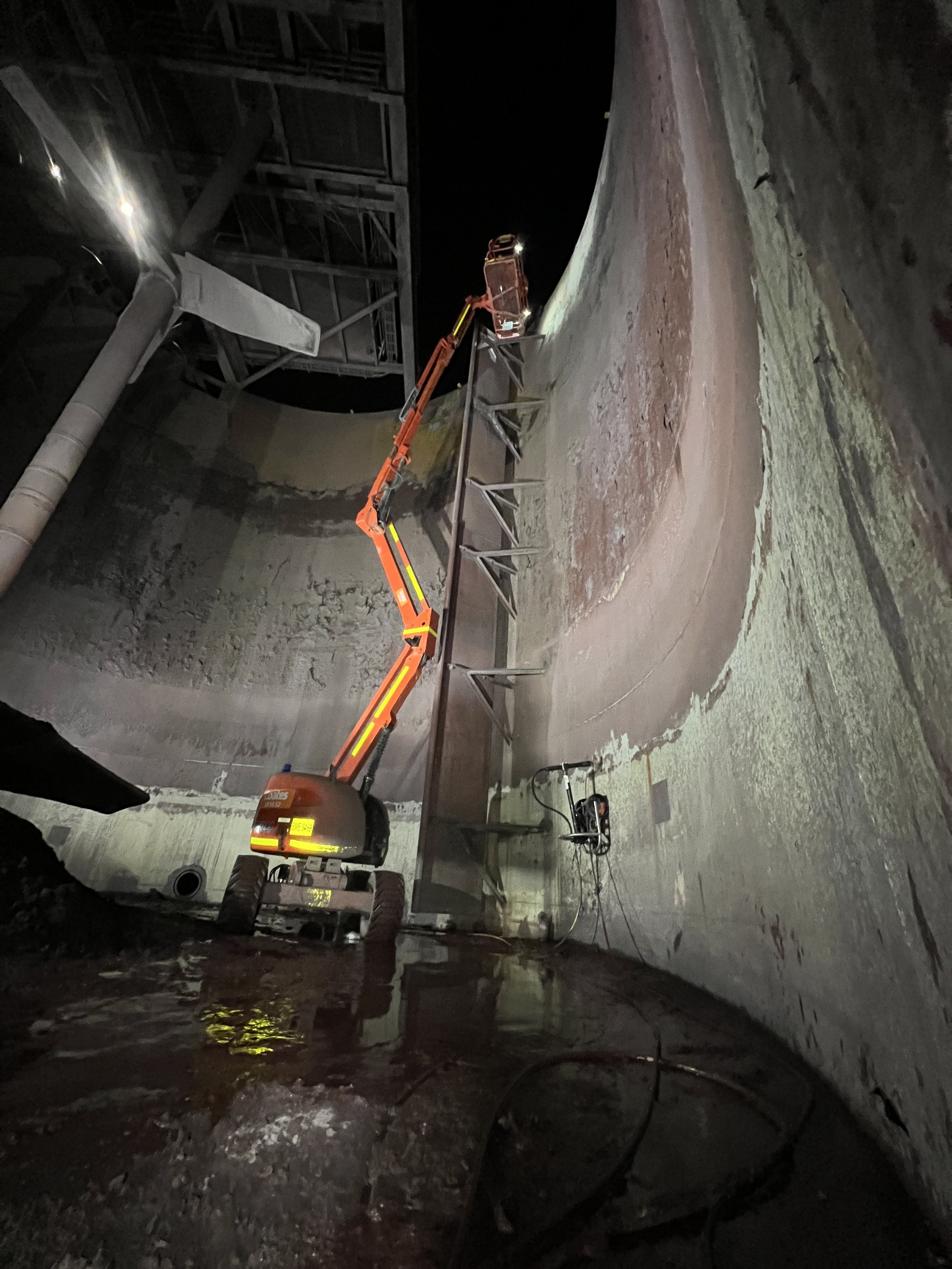
Flotation feed tank remediation
IND was contracted to recoat a mine site’s badly corroded flotation feed tank during an extremely tight shutdown period.
As part of a long-term maintenance program, we were contracted to repair another section (roughly 10%) of the internal surface of this steel flotation feed tank which was severely corroded, threatening the tank’s structural integrity. This shutdown period only allowed for the tank to be offline for a maximum of 10 days, preventing IND’s crew from being able to recoat the entire internal surface of the tank. Due to the tank’s usual contents, the corrosion was so severe that traditional abrasive blasting wouldn’t remove it in time, IND instead utilised our portable ultra high pressure water jetting techniques to remove the heavy corrosion. The surface could then be quickly prepared for recoating using traditional abrasive blasting methods. A polyurea coating was chosen to recoat the bare steel to provide long-term protection from the tank’s corrosive contents and damaging debris.
Project overview:
Project planning
Ultra high pressure water jetting
Abrasive blasting
Polyurea application
QA inspection and reporting
Corrosion Removal and Surface Preparation
The feed tank was first flushed with water to remove as much product as possible by a concrete truck’s extended hose. Then further cleaned by a skid-steer loader to move as much product as possible to the tank’s centre and edges to create a safe working area for two 45ft boom lifts to operate simultaneously.
Once the skid-steer loader had been removed and replaced by the two boom lifts via crane, the level of corrosion could be properly assessed. The layers of corrosion ranged from 10mm-30mm thick leaving behind deep erosion pitting in the steel substrate. The previous coating was full of defects and had failed, requiring complete recoating.
To efficiently address the extensive corrosion issues without subjecting workers to risky and labour-intensive manual efforts, we implemented a remote controlled VertiDrive robot water blasting setup. Attaching to the steel substrate via magnets, the robot has the capability to navigate both vertically and horizontally along the tank wall’s surface whilst the sweeping arm blasts away the corrosion using ultra high pressure water jets up to 40,000 psi.
Once a significant portion of the corrosion had been successfully removed, the steel substrate surface required further cleaning to eliminate any remaining contaminants that could accelerate corrosion. To achieve this, the designated sections of the tank wall underwent an additional two step cleaning process. The areas of the tank wall were first wet blasted followed by a dry abrasive blast using premium garnet. This procedure resulted in a bare steel surface classified as ISO 8501-1 Sa 2.5 with an anchored surface profile of at least 70μm, ensuring neglible contaminants remained and the complete adhesion of the following polyurea coating.
Polyurea Coating Application
Before the new coating could be applied, our NACE/AMPP certified QA inspectors tested the substrate for surface profile and salts contamination. The salts level passed and the surface profile recordings averaged 97μm, within specification for successful polyurea coating.
Following the approval of surface cleanliness, the environmental conditions were evaluated to guarantee the optimal adherence and curing of the polyurea coating. Prior to commencing the surface coating process, test plates were also coated replicating the exact conditions the batch of polyurea would be applicated under. These test plates were then measured for dry film thickness, in this case 3.6mm, falling in the specifed 3-4mm thickness range. The test plates were also stored safely so a coating adhesion test could also be conducted at a later date.
The polyurea coating was then applied by our spray technicians using our portable plural pump system, heating the product components along heated lines and then mixing the two components at the desired 3:1 ratio only at the tip of the spray nozzle. The rapid setting polyurea then cures within 5 seconds, setting hard and ready to be returned to service almost immediately. The selection of polyurea was predicated on its unique capacity to be rapidly applied in substantial thicknesses. This attribute guaranteed comprehensive protection for the tank’s steel substrate against the corrosive elements contained within the tank. The durable polyurea coating is also hard wearing, protecting the walls from the damaging debris. Upon the completion of the work area’s preparations and clean-up, the tank was resealed and promptly put back into service on the final day of the scheduled shutdown. This swift turnaround minimised operational downtime, ensuring the continuation of the tank’s critical function.













